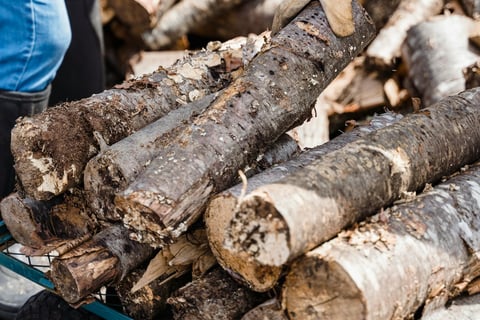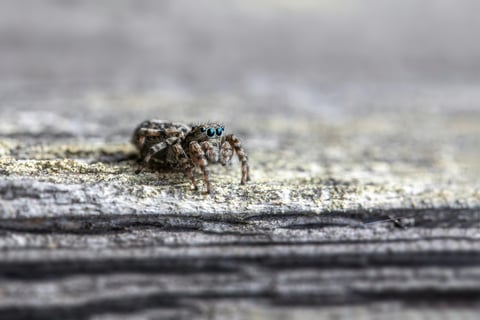Firewood Pests: How to Prevent, Identify, and Manage Pests in Your Woodpile
Struggling with pests in your firewood? Learn how to prevent and manage firewood pests, discover the safest types of wood, and get expert storage tips. Keep your firewood pest-free at FirewoodFanatic.com
2/4/20255 min read


Pests in Wood: Your Ultimate Guide to Preventing and Managing Firewood Pests
At FirewoodFanatic.com, we know that nothing beats the warmth and ambiance of a crackling fire. But what happens when your firewood becomes a haven for pests? From termites to beetles, pests in wood can quickly turn your cozy firewood stash into a nightmare. In this Q&A-style guide, we’ll answer your burning questions about pests in wood, how to prevent them, and which types of firewood are safest to use. Let’s dive in!
---
Q: What Are the Most Common Pests Found in Firewood?
A: Firewood is a magnet for a variety of pests, including:
1. Termites: These wood-eating insects can cause significant damage to your firewood and even your home if the infested wood is stored too close to your house.
2. Carpenter Ants: Unlike termites, carpenter ants don’t eat wood but tunnel through it to build nests, weakening the wood in the process.
3. Powderpost Beetles: These tiny beetles lay eggs in wood, and their larvae feed on it, leaving behind a fine, powdery sawdust.
4. Bark Beetles: These pests burrow under the bark of firewood, making them harder to detect until it’s too late.
5. Spiders and Scorpions: While not wood-eating pests, they often hide in firewood stacks, posing a risk when you bring wood indoors.
Knowing which pests to look for is the first step in protecting your firewood and your home.
---
Q: How to Prevent Firewood Pests?
A: Preventing pests in your firewood is all about proper storage and maintenance. Here are some expert tips:
1. Store Firewood Off the Ground: Elevate your firewood stack using a rack or pallets to reduce moisture and make it harder for pests to access the wood.
2. Keep Firewood Dry: Pests are attracted to damp, rotting wood. Store your firewood in a dry, covered area, but avoid wrapping it completely in plastic, as this can trap moisture.
3. Store Firewood Away from Your Home: Keep your firewood stack at least 20 feet away from your house to prevent pests from migrating indoors.
4. Rotate Your Stock: Use the oldest firewood first to prevent it from sitting too long and becoming a breeding ground for pests.
5. Inspect Firewood Before Bringing It Indoors: Always check for signs of pests, such as holes, sawdust, or live insects, before bringing firewood inside.
6. Avoid Storing Firewood Indoors: Only bring in the amount of firewood you plan to use immediately. Storing firewood indoors increases the risk of pests invading your home.
By following these steps, you can significantly reduce the risk of pests infesting your firewood.
---
Q: Which Type of Firewood Is Safe from Pests?
A: While no firewood is entirely pest-proof, some types are less attractive to pests than others. Here’s a breakdown:
1. Hardwoods: Hardwoods like oak, maple, and hickory are denser and less prone to pest infestations compared to softwoods. They also burn hotter and longer, making them a favorite among firewood enthusiasts.
2. Seasoned Firewood: Well-seasoned firewood (dried for at least 6-12 months) is less appealing to pests, as they prefer moist, decaying wood.
3. Kiln-Dried Firewood: Kiln-dried firewood is heated to high temperatures, killing any pests or eggs present in the wood. It’s one of the safest options for preventing pests.
4. Avoid Softwoods: Softwoods like pine and cedar are more susceptible to pests due to their higher sap content and softer texture.
When purchasing firewood, always ask the supplier about the type of wood and how it was seasoned or treated.
Q: Can Pests in Firewood Damage My Home?
A: Yes, pests in firewood can pose a serious threat to your home if not managed properly. Termites and carpenter ants, for example, can easily migrate from your firewood stack to your home’s structure, causing costly damage. Even smaller pests like spiders and scorpions can become a nuisance if they hitch a ride indoors on your firewood.
To protect your home, always store firewood away from your house, inspect it carefully before bringing it inside, and address any pest infestations immediately.
---
Q: How Do I Know If My Firewood Is Infested with Pests?
A: Look for these telltale signs of pest infestations in your firewood:
- Holes or Tunnels: Small holes or tunnels in the wood are a clear indicator of pests like beetles or termites.
- Sawdust or Frass: Fine sawdust or powdery residue around your firewood stack is a sign of powderpost beetles or carpenter ants.
- Live Insects: If you see live insects crawling on or around your firewood, it’s likely infested.
- Bark Damage: Bark that’s peeling or has unusual patterns may indicate bark beetles or other pests.
If you notice any of these signs, take action immediately to prevent the infestation from spreading.
---
Q: What Should I Do If I Find Pests in My Firewood?
A: If you discover pests in your firewood, follow these steps:
1. Isolate the Infested Wood: Move the infested firewood away from your home and other woodpiles to prevent the pests from spreading.
2. Burn the Infested Wood: If possible, burn the infested firewood immediately to kill the pests.
3. Treat the Area: Use a pest control spray or natural remedies like diatomaceous earth to treat the area where the infested wood was stored.
4. Consult a Professional: For severe infestations, contact a pest control expert to assess the situation and recommend treatment options.
---
Q: Are There Natural Ways to Repel Pests from Firewood?
A: Absolutely! Here are some natural methods to keep pests away from your firewood:
1. Use Essential Oils: Oils like eucalyptus, tea tree, and peppermint are natural pest repellents. Spray a diluted solution around your firewood stack.
2. Diatomaceous Earth: This natural powder can be sprinkled around your firewood to deter crawling insects.
3. Keep the Area Clean: Remove debris, leaves, and other organic matter from around your firewood stack to eliminate hiding spots for pests.
4. Introduce Beneficial Insects: Ladybugs and nematodes are natural predators of many wood-boring pests.
Q: Can I Use Treated Wood as Firewood?
A: No! Never burn treated wood, as it can release toxic chemicals into the air. Treated wood is often used for construction and contains chemicals like arsenic and copper, which are harmful when burned. Stick to natural, untreated firewood for your safety and the environment.
---
Final Thoughts
Pests in wood can be a frustrating problem, but with the right knowledge and precautions, you can keep your firewood stash pest-free. Remember to store your firewood properly, choose pest-resistant types of wood, and inspect your firewood regularly. By taking these steps, you’ll ensure that your fires stay warm, cozy, and pest-free all season long.
This post may contain affiliate links. If you make a purchase through these links, I may earn a small commission at no extra cost to you. Thank you for supporting FirewoodFanatic.com!




